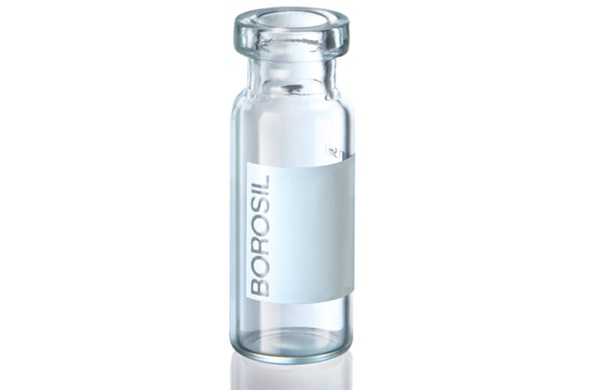High-Performance Liquid Chromatography (HPLC) is an important analytical method for various industries, from pharma to food safety. HPLC analysis relies not just on the chromatographic equipment but also on the quality of consumables utilised. Of these, HPLC vials are the most essential, imparting sample integrity and correct analysis. The proper selection of the type of vial enhances method reproducibility and prevents contamination errors or incompatibility.
This guide explores the different , their materials, closure mechanisms, and suitability for specific applications, helping laboratories make informed choices.

Understanding HPLC Vials and Their Role in Chromatographic Analysis
HPLC vials are sample containers that shield analytes from outside contamination and make them compatible with autosamplers. Major specifications of a perfect HPLC vial are:
- Inertness: No interaction or leaching with solvents or analytes.
- Dimensional Accuracy: Provides autosampler and injection system compatibility.
- Sealing Integrity: Eliminates evaporation and cross-contamination.
- Chemical Resistance: Resists exposure to acids, bases, and organic solvents.
The right vial selection affects sample stability, analytical reproducibility, and regulatory compliance, especially in industries such as pharmaceuticals, where slight deviations can invalidate results.
Types of HPLC Vials Based on Closure Mechanism
HPLC vials are available in different designs, mainly differentiated by closure type. The choice is based on considerations such as convenience of handling, sealing effectiveness, and sample loss risk.
Comparison of HPLC Vial Closure Types
| Vial Type | Sealing Mechanism | Key Advantages | Best For |
| Screw-Top Vials | Threaded cap with PTFE-silicone septa | Reusable, strong sealing, minimal evaporation | Long-term storage, high-throughput labs |
| Snap-Top Vials | Press-fit plastic cap | Quick handling, tool-free closure | Routine testing, automation-compatible systems |
| Crimp-Top Vials | Aluminium cap sealed with crimper | Highest sealing integrity, no evaporation | Volatile solvents, pharmaceutical validation |
Every type of closure has certain merits based on the workflow of the laboratory. Crimp-top vials, for example, are commonly used with highly volatile solvents, and screw-top vials are suitable for general purposes.
Material Considerations: Choosing Between Glass and Plastic Vials
HPLC vials available at Borosil Scientific, for example, are primarily made from borosilicate glass. Each material has unique chemical properties affecting sample interaction.
Material Comparison Table
| Material | Chemical Resistance | Thermal Stability | Common Applications |
| Borosilicate Glass | High; resists acidic and organic solvents | Excellent; withstands high temperatures | Pharmaceuticals, environmental analysis, stability studies |
For applications requiring extreme chemical stability, such as pharmaceutical testing, USP Type I borosilicate glass is the standard choice due to its low alkali content and non-reactive nature.
Speciality HPLC Vials for Specific Applications
Certain analyses demand vials with specific attributes, including pre-slit septa, amber coating, or bonded closures. Below are some common speciality vials used in chromatography labs.
Speciality Vials and Their Functions
| Speciality Vial Type | Feature | Application |
| Amber Glass Vials | Light-resistant | UV-sensitive samples |
| Pre-Slit Septa Vials | Reduces needle damage | High-throughput automation |
| Bonded Closure Vials | Pre-attached cap and septa | Eliminates manual sealing errors |
| Low Adsorption Vials | Minimises analyte binding | Peptide/protein analysis |
Vials must comply with stringent ISO 15378 (GMP) standards for regulated industries like pharmaceuticals and food testing to maintain quality consistency across production batches.
Best Practices for Handling and Storing HPLC Vials
To maintain sample integrity and prevent contamination, laboratories should follow these best practices:
- Wear Gloves: Avoid fingerprints that could introduce contaminants.
- Use Vial Racks: Organises samples and prevents mix-ups.
- Store in a Dust-Free Environment: Keeps vials clean and prevents particulate contamination.
- Replace Septa After Multiple Punctures: Ensures a reliable seal.
- Avoid Overfilling Vials: This allows proper autosampler needle penetration without sample loss.
Following these practices helps maximise the efficiency of HPLC vials, extending their usability and maintaining analytical accuracy.
Selecting the Right Vial for Your Workflow
Choosing the right HPLC vial involves considering:
- Compatibility: To make sure that the vials fit your HPLC autosampler.
- Sample Sensitivity: Use amber vials for UV-sensitive samples.
- Solvent Interaction: Glass vials for aggressive solvents, plastic for aqueous solutions.
- Sealing Requirements: Crimp-top for volatile solvents, screw-top for ease of use.
A cost-benefit approach should also be considered in the selection. While premium glass vials provide reliability, plastic alternatives offer cost savings for routine, non-critical testing.
Advancements in HPLC Vial Technology
Modern HPLC vials incorporate innovative features that enhance performance:
- Low Adsorption Coatings: Reduce sample interaction with the vial surface.
- Pre-Slit Septa Designs: Minimises needle stress and ensures smoother sample withdrawal.
- High-Purity Borosilicate Glass: Enhanced resistance to extractables and leachables.
These advancements directly contribute to the reproducibility of HPLC results and laboratory efficiency.
Conclusion
Selecting the right HPLC vials provides analytical accuracy and laboratory efficiency. Material type, closure, and application specificity are some of the considerations that heavily impact the selection of the most appropriate vial. Laboratories can optimise their HPLC work processes, reduce sample loss, and improve analytical accuracy by being aware of the different types of vials, their materials, and sealing methods.

